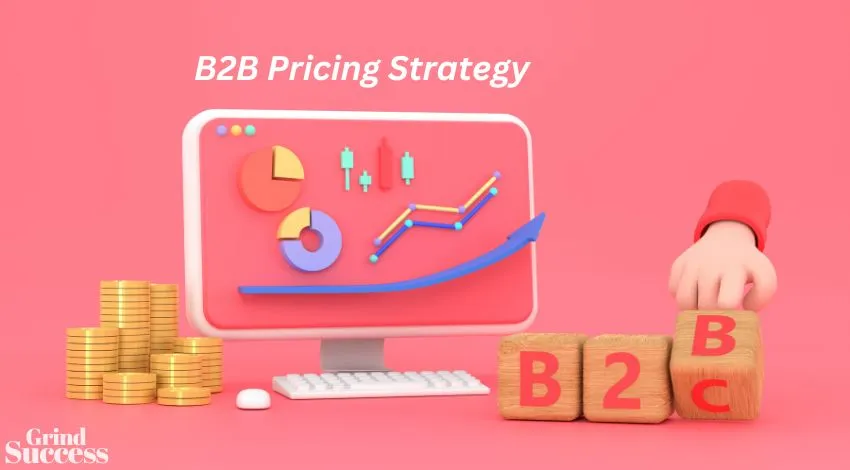How to Set the Right Price for B2B Customers

Pricing is a critical component of any business, and setting the right price for your B2B customers is key to generating revenue and ensuring profitability.
However, determining the appropriate price for your products or services in a B2B context can be challenging.
Here is How to set the Right Price for Your B2B Customers
Setting the right price helps you strike a balance between value, competitiveness, and profitability.
1. Understand Your Costs
Before setting a price, it is crucial to have a clear understanding of your costs. Calculate all your direct and indirect costs associated with producing and delivering your products or services.
This includes materials, labor, overhead, shipping, and any other relevant expenses. By understanding your costs, you can ensure that your prices cover these expenses and contribute to your bottom line.
2. Study the Market
Conduct thorough market research to gain insights into your industry’s pricing standards and trends. Analyze your competitors’ pricing strategies, taking into account factors such as product quality, features, and customer service.
Understanding the market dynamics will help you position your prices competitively, while also adding value to your customers.
3. Segment Your Customers
Procure-net B2B customers can have different needs, preferences, and purchasing power. Segmenting your customers based on characteristics such as size, industry, and buying behaviour will allow you to tailor your pricing strategies to each segment.
For example, you might offer volume discounts to large-scale customers or personalized pricing plans for long-term clients to incentivize loyalty.
4. Determine the Value Proposition
Consider the unique value proposition that your products or services bring to your B2B customers. Identify the benefits and outcomes that your customers derive from using your offerings.
Understanding the value you provide will help you determine the price elasticity of your products or services and set a price that captures that value.
5. Consider the Customer’s Perspective:
Put yourself in your B2B customer’s shoes and consider their perspective when pricing your offerings. Understand their pain points, goals, and motivations.
Align your pricing with the value you bring to their business and the return on investment they will receive. This customer-centric approach will help you establish a fair and mutually beneficial pricing structure.
6. Evaluate the Competitive Landscape
While it is crucial to consider your own costs and value proposition, it is equally important to evaluate your competitors’ prices. Compare your offerings with similar products or services in the market and determine how your value proposition differentiates you.
Avoid underpricing to gain a competitive edge, as this may signal lower quality to customers and harm your profitability in the long run.
7. Test and Iterate
Pricing is not a one-time decision but an ongoing process. It is essential to continuously test and iterate your pricing strategies to find the optimal balance.
Consider using A/B testing to evaluate different pricing models or conducting surveys to gather feedback from your customers.
Regularly analyzing the effectiveness of your pricing strategies will allow you to make adjustments and improve your pricing over time.
8. Offer Pricing Flexibility
B2B customers often have unique requirements and specific budgets. Offering pricing flexibility can set you apart from your competitors and cater to a broader range of customers.
For example, you can consider offering different pricing tiers or customizable packages to accommodate various budget levels and preferences.
9. Leverage Data and Analytics
Make use of data and analytics to inform your pricing decisions. Monitor your sales, customer behavior, and market dynamics to identify patterns and trends.
Utilize pricing optimization software or tools to analyze data and make data-driven pricing decisions. This will help you make informed choices based on real-time information and maximize your revenue potential.
10. Monitor and Adapt
Once you have set your prices, it is essential to monitor their effectiveness and adapt as needed. Regularly analyze your sales data, customer feedback, and profitability.
If necessary, revisit your pricing strategy and make adjustments to address changing market conditions or shifts in customer demands.
This ongoing monitoring and adaptation will ensure that your pricing remains competitive and aligns with your business objectives.
Conclusion
Setting the right price for your B2B customers requires a thorough understanding of costs, market dynamics, customer segmentation, and competitive positioning.
By considering these factors and adopting a customer-centric approach, you can determine a pricing structure that aligns with the value you provide while ensuring profitability.
Continuously monitor, test, and adapt your pricing strategies based on data and customer feedback to stay competitive and drive long-term success in the B2B marketplace.




